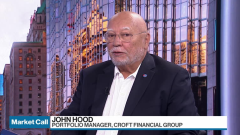Jun 20, 2024
Norway Expects to Keep Rates at 4.5% This Year to Cool Economy
, Bloomberg News

(Bloomberg) -- Norway’s central bank said it will probably need to keep borrowing costs at the highest level since 2008 for the rest of the year, citing worries that inflation will stay stubborn.
Norges Bank held its benchmark deposit rate at 4.5% on Thursday, as predicted by all analysts in a Bloomberg survey. Officials said that they will probably need to keep it at that level until the end of 2024, scrapping previous forecasts for a first cut in September. The krone jumped on the news.
“The economy, from all the evidence that we have seen, has not cooled down as much as we had expected,” Governor Ida Wolden Bache said in an interview in Oslo. “We see wage growth coming in above our expectations and together this will imply an upward division to our inflation forecasts.”
The decision puts Norway toward the more hawkish end of the spectrum of advanced economies, more so than even than the US Federal Reserve, which has pared back expectations of cuts later in 2024.
By contrast, easing has begun in neighboring Sweden and the euro zone, the Swiss National Bank just delivered a second consecutive rate reduction, and the Bank of England kept alive hopes of a loosening by August.
“Norges Bank is not joining the European rate-cutting bandwagon as they firmly signal no one to expect a rate cut this year,” Kjetil Martinsen, chief economist at Swedbank AB in Oslo, said in a note to clients. “After all, the Norwegian economy is still doing fine.”
The Norwegian krone — the best performer in the G-10 space of major currency jurisdictions this quarter — jumped after the announcement, rising 0.6% versus the euro to hit its highest level since January. Against the dollar it climbed 0.4%.
The krone has gained versus the euro since May on growing expectations that Norges Bank will lag other central banks in easing. Forward-rate agreements used to speculate on borrowing costs show traders are now pricing in 10 basis points worth of rate cuts in the next 6 months, versus 26 basis points seen on Monday.
“Despite some softer inflation prints lately, the Norges Bank instead emphasized that wage growth would be higher than earlier envisaged, and so inflation could be higher than projected back in March,” Charlotte Ong, European currency strategist at HSBC, said in a note. She added the krone could gain more versus the euro “so long as the Norges Bank maintains its hawkish stance.”
Wolden Bache and her colleagues had already signaled last month that Norway’s first rate cut may have to be postponed beyond September, as evidence started mounting that the fossil-fuel-rich economy is turning the corner after near stagnation last year, in turn helping to fuel pay demands.
A survey by Norges Bank confirmed last week that most companies expect output to increase this quarter and next, as well as wage growth to keep last year’s pace of 5.2% in 2024.
The central bank now expects the mainland economy to grow 0.8% this year and 1.3% in 2025, slightly more than it forecast in March. While it trimmed inflation forecasts for this year, it sees both headline and underlying price growth exceeding its 2%-target at the end of its forecast horizon in 2027.
“Our assessment is that inflation expectations are well anchored,” Wolden Bache said in the interview. “They are a little above the 2%-target when we look five years ahead. But we don’t see that as a sign that we have lost confidence in the target and we expect inflation to gradually fall also through the last year of the forecast horizon.”
--With assistance from Joel Rinneby, Stephen Treloar, Alastair Reed, Christian Wienberg, Sanne Wass and Naomi Tajitsu.
(Updates with governor, analyst comments from third paragraph.)
©2024 Bloomberg L.P.






